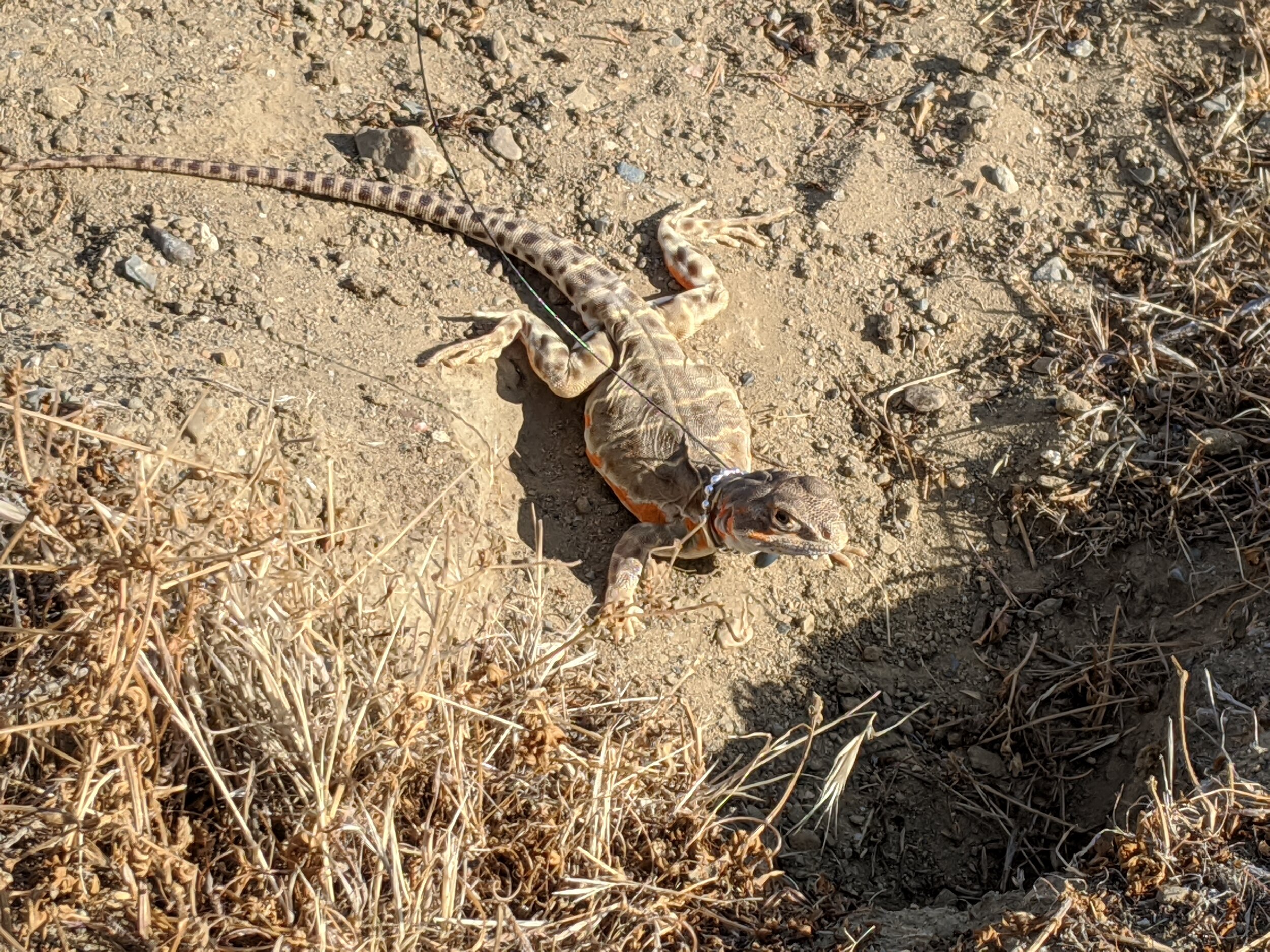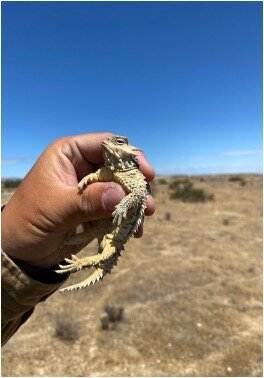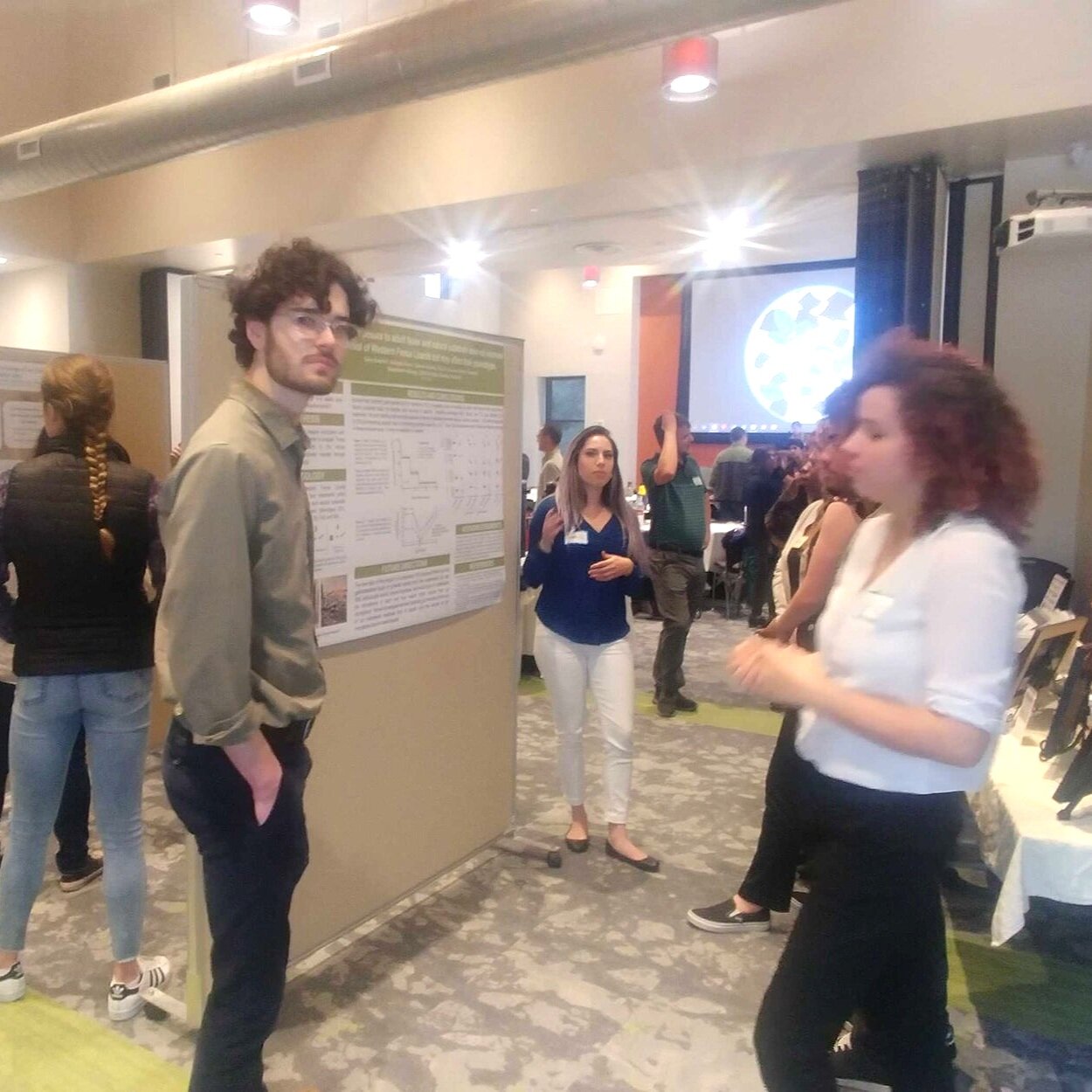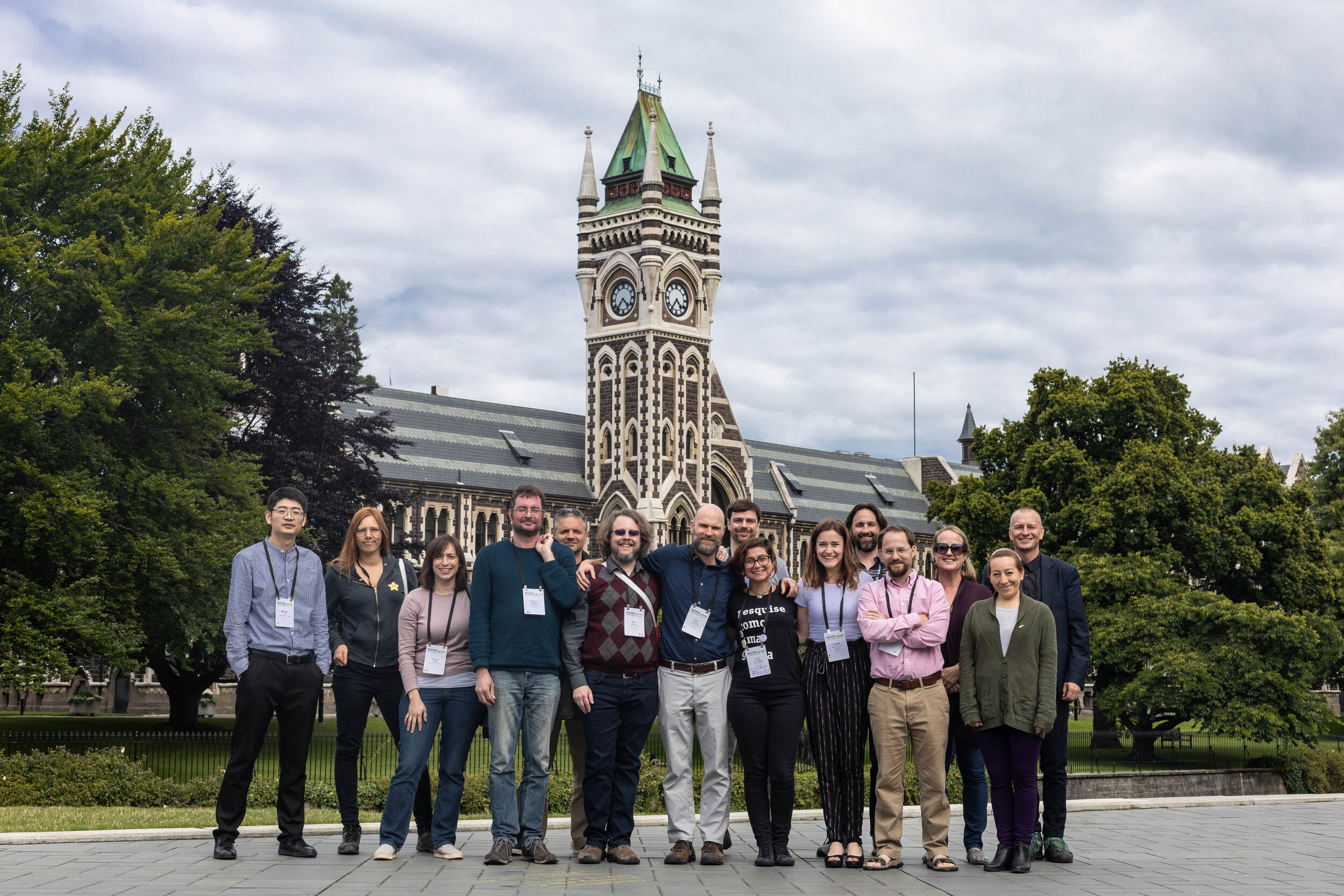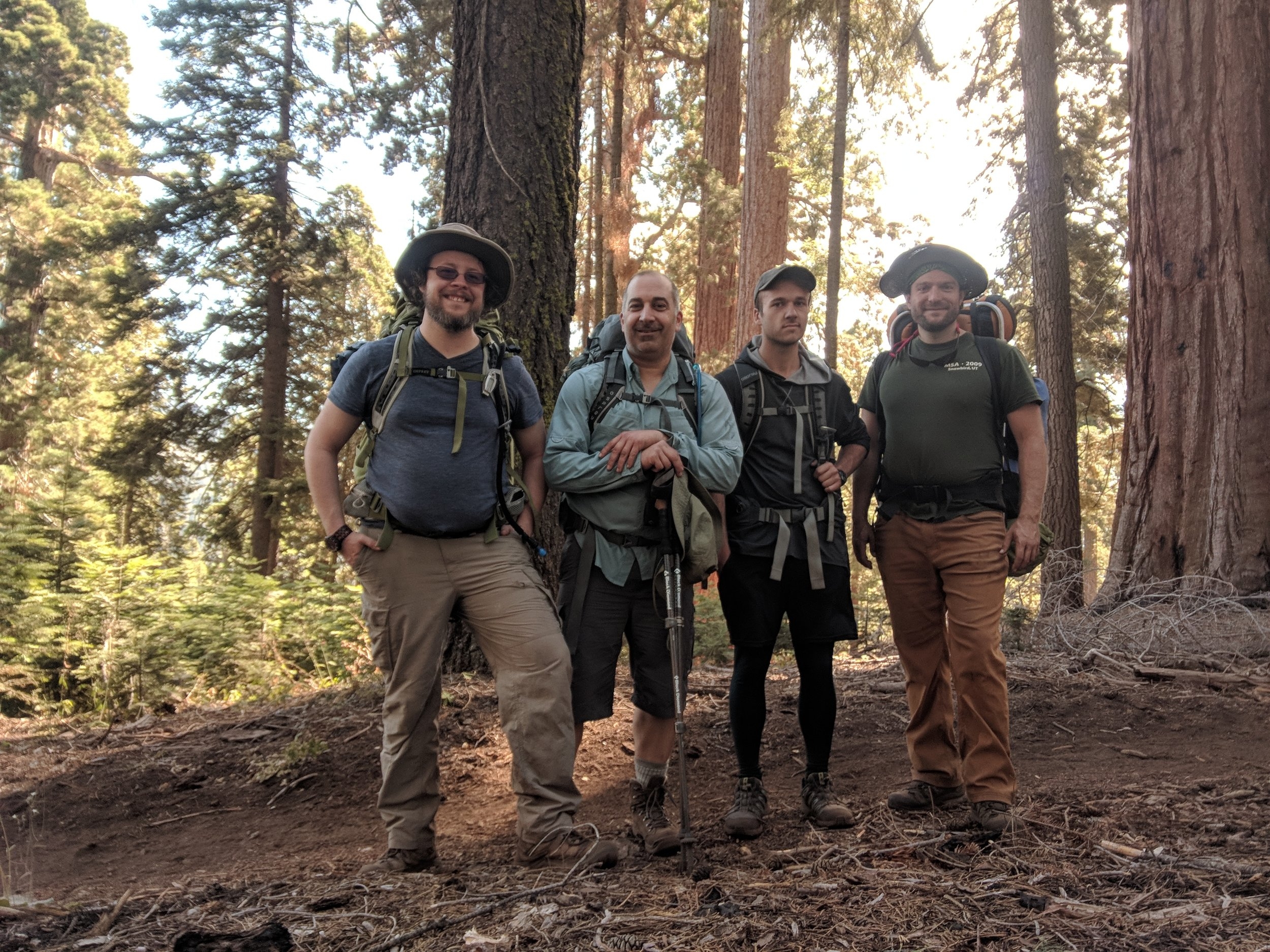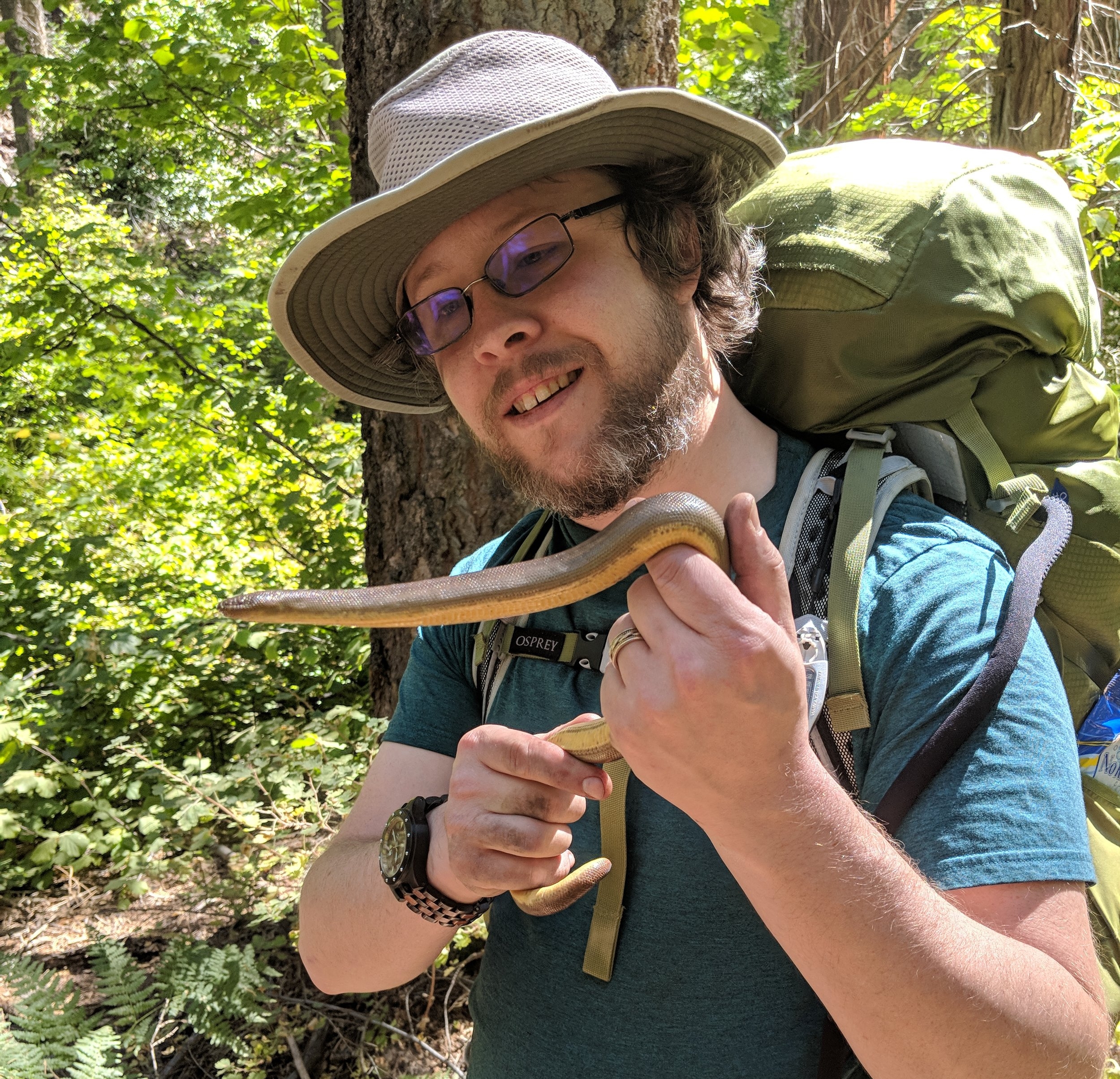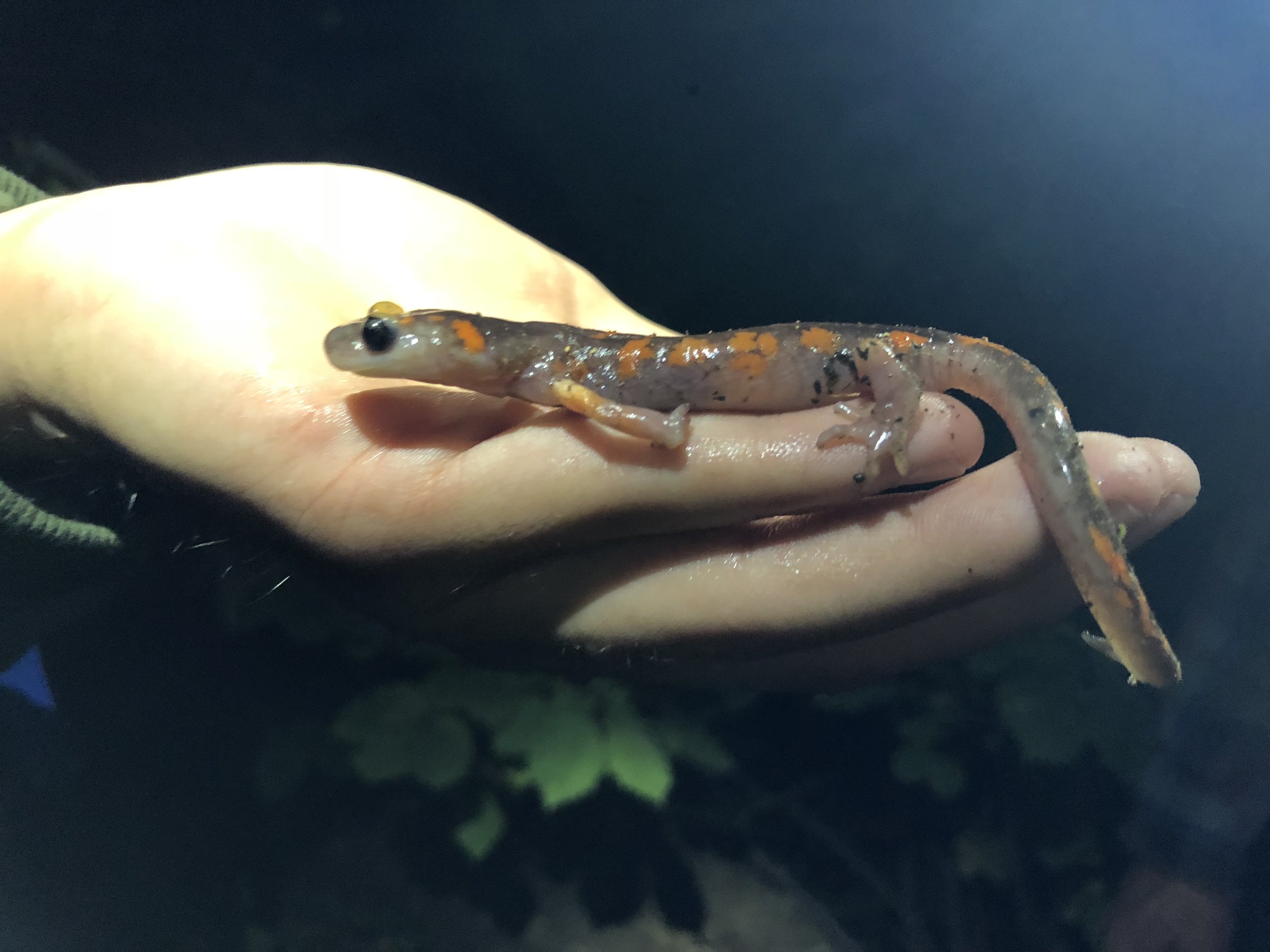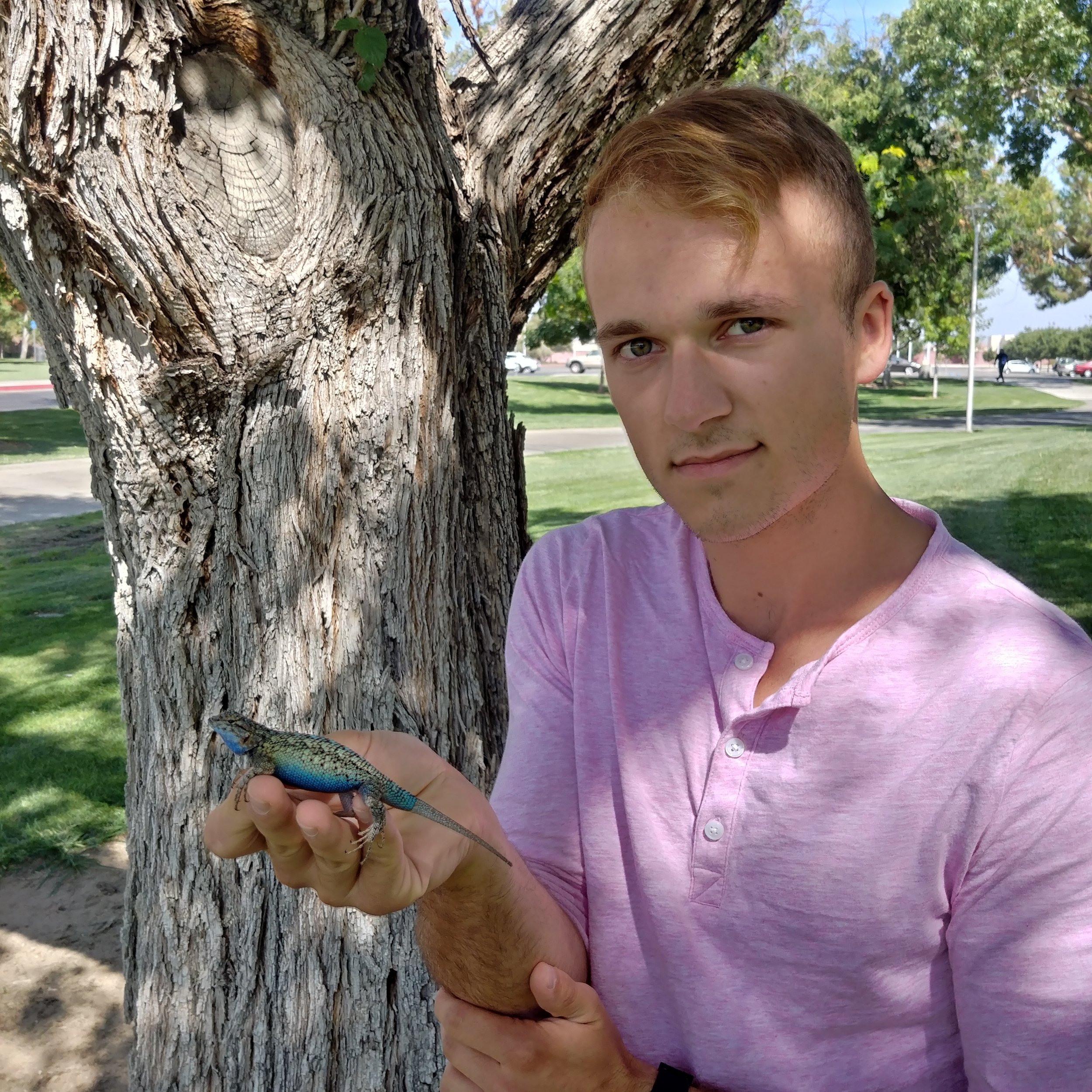In their new paper, TREE alumns Dalton Leibold and Jacob Gastelum find experimental support for the Hierarchical Mechanisms of Thermal Limitation hypothesis
Undergraduate student, Kathryn Ramirez, and her Blunt-nosed Leopard Lizard research featured by Fresno State University
https://stories.fresnostate.edu/battling-extinction
TREE lab featured by College of Science and Mathematics
Wildlife in the Panoche Hills
by Kathryn Ramirez
There is a cool new page on the TREE lab website dedicated to fun facts and information about the wildlife of the Panoche Hills. Here, we’ll highlight species found and photographed by members of the TREE lab while in the field. We hope that you will take the time to read about some awesome wildlife that you may be able to find right in your own backyard.
During the 2020 field season in the Panoche Hills of the San Joaquin Valley Desert, the TREE lab observed mass amounts of wildlife while monitoring the endangered Blunt-nosed Leopard Lizard. There are endangered species other than Blunt-nosed Leopard Lizards living only an hour away from Fresno, such as the Fresno Kangaroo Rats, and state protected species such as Blainville’s Horned Lizard. In addition to these, we’ve observed western pacific rattlesnakes, scorpions, road runners and so much more. All photos are taken by members in or surrounding the TREE lab while doing field surveys or camping. Updates to this post will be made as new wildlife is found and photographed and will later include plant life in the Panoche Hills.
First student-authored paper from the TREE lab now available in JEZ-A!
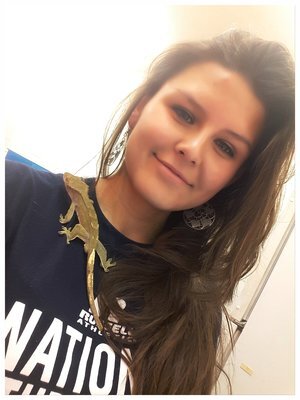
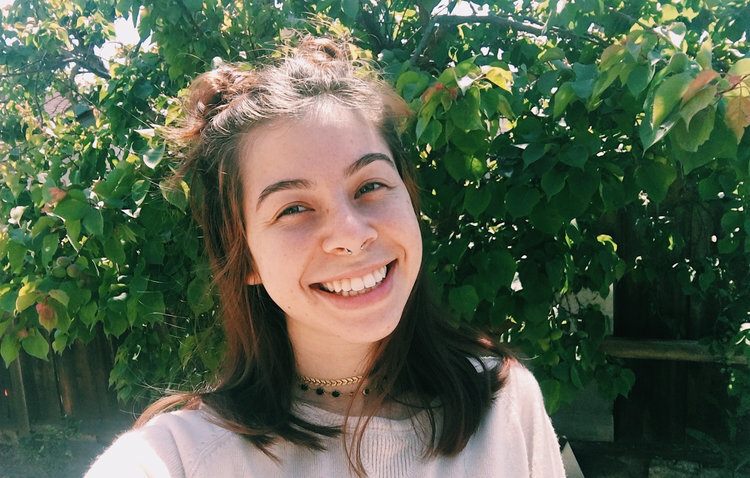
TREE lab alums Andrea (Andy) Aparicio Ramirez and Karina Perez just had their research from the lab published in the Journal of Experimental Zoology. The paper began as Andy’s honors thesis research and explores how Crested Geckos (Correlophus ciliatus) thermoregulate and are affected by the thermal environment.
Crested Geckos were though to be extinct for ~100 years, but were rediscovered in New Caledonia (an island off the coast of Australia) in the mid 1990s. Over a two-year period a few animals were exported from New Caledonia to Europe and the US before export was banned. However, it turns out this species thrives in captivity and the decedents of those originally exported individuals now represent one of the most popular species in the commercial pet trade. Despite their popularity as pets, very little is known about the biology of this species, which only naturally occurs in a few isolated parts of New Caledonia.
In their research, Andy and Karina discovered that Crested Geckos actively thermoregulate to body temperatures of 24-28°C, and only voluntarily allow their body temperatures to get as high as 33°C. These preferred temperatures correspond closely to temperatures naturally available in New Caledonia, suggesting that the lizards rarely need to thermoregulate in nature. Surprisingly, though, the animals perform best (i.e. run fastest) at 32°C, which is well above preferred body temperatures and corresponds to the maximum body temperatures ever allowed.
Comparison of thermoregulatory behavior and thermal performance in crested geckos. Top: distribution of body temperatures experienced in a thermal gradient with preferred body temperature (PBT), voluntary thermal minimum (VTmin) and voluntary thermal maximum (VTmax) shown. Shaded regions are 95% confidence intervals. Bottom: thermal performance curve for running performance. points are whiskers are means and 95%CI at five test temperatures. Inset picture is a crested gecko.
For additional details, check out the paper: Aparicio Ramirez et al 2020 JEZA
Ultrasound training at the Fresno Chaffee Zoo!
Cha practices using a portable ultrasound machine to visualize developing follicles in a lizard. Masks are to reduce COVID19 risk. From left to right: Lindsay Cosmi, Dr. Mike Wenninger, and M.S. student, Cha Thao.
Recently, the TREE lab received a Wildlife Conservation Fund grant from the Fresno Chaffee Zoo to purchase a portable ultrasound machine. The purpose of the ultrasound is to allow us to monitor egg development in federally-endangered blunt-nosed leopard lizards (Gambelia sila). This is part of a joint collaboration between the USBLM, Fresno Chaffee Zoo, and TREE lab to monitor and study a relict population of blunt-nosed leopard lizards in the Panoche Hills west of Fresno.
Zoo veterinarian, Dr. Mike Wenninger sexing a Gila Monster via ultrasound. From left to right: Dr. Mike, new keeper, Steve, and reptile curator + friend of the lab, Mark Halvorsen.
However, before we could use it with endangered species, we needed some training! So, the zoo invited MS student Cha Thao and PI Rory Telemeco to work with zoo staff to learn the ropes! To start, zoo veterinarian Dr. Mike Wenninger and vet tech Lindsay Cosmi walked us over to the Herpetarium (i.e. reptile house) and gave us crash course in radiology. We then got to practice with some of the zoo’s animals, including some pregnant spiny lizards (Sceloporus), and a rock lizard (Petrosaurus). Then, we helped the zoo out by using the ultrasound and our new skills to help sex the Gila Monsters (Heloderma) in the collection, although Dr. Mike made the final call (turns out there were 2 males and 2 females).
Finally, Cha and I returned the favor as best we could and showed the vet and herp staff at the zoo how we lasso lizards, and especially the knots we use for our lassos. As a group, we then stalked the zoo catching naturally-occuring western fence lizards on the zoo grounds, which we then practiced our ultrasound with before eventually releasing them.
It was an eventful, amazing day. Everyone learned new skills and we strengthened relationships for our upcoming collaboration. Next stop: leopard lizards on the Panoche!
TREE lab members present at California HerpFest!
TREE lab members (left to right) Nicholas Putnam, Daisy Underhill, Vanessa Valencia, Rory Telemeco, Dalton Leibold, and Cha Thao at HerpFest
The TREE lab met local researchers and presented some of our work at the 2020 California HerpFest, a local meeting of California scientists studying reptiles and amphibians. It was a whirlwind of a day. We met at Fresno State at 5am, drove the 4 hours to the meeting at Westmont College in Santa Barbara, spent the day talking science before moving to a social in the evening where we talked more science, and finally drove back to Fresno, arriving around Midnight. We were all exhausted by the end, but I think we all learned a lot, met fantastic people, and got to show off some of what we’ve been up to for the last couple of years.
Rory giving the plenary presentation at California HerpFest 2020
We had to leave so early, because Rory gave the first talk of the conference at 9:30. He used this plenary presentation to generally introduce the TREE lab, and describe our new method for measuring maximum metabolic rates in lizards.
Nick (left), Vanessa (middle), and Daisy (right and a little blurry) presenting the results of the “poop group” experiment.
Later in the day, Daisy Underhill, Nick Putnam, and Vanessa Valencia gave their first poster presentations, which described the research they’ve been working on for the last couple of years as the “poop group”. It’s been a long road since Daisy, Nick, and Nadya Pirogova first began designing the experiment 2018, so it was exciting to see their results being presented at a conference. Somewhat surprisingly to us, none of their microbe treatments (exposure to feces or natural substrate) affected offspring survival, but we saw a positive effect of the treatments on hatchling body condition at 14 days post-hatching. Nick, Daisy, and Vanessa spent last semester extracting DNA from the guts of lizards at the end of the experiment which are currently being sequenced. So, for their next presentation they should be able to say whether or not the treatments actually affected the gut microbiomes of the lizards. Stay tuned!
Dalton presenting his first talk at a scientific conference!
Finally, Dalton Leibold rounded out the day with the penultimate talk of the meeting (and his first talk at a scientific conference). Dalton described the work that he and Jacob Gastellum performed with the “HMTL group” testing the combined effects of metabolic demand and oxygen environment on thermal preferences in fence lizards. The talk was well received. He did a great job, especially for his first try at this! Dalton is currently working on drafting a manuscript describing this research, which will be chapter 1 of his thesis. So, hopefully it will be in print in the not-to-distant future!
In addition to giving talks, we heard awesome talks from a bunch of cool California researchers from USGS, Westmont College, CSU Northridge, La Sierra University, Cal Poly SLO, and others. We also got to have some great conversations. Among other things, Cha got a lot of insight from folks about how best to start up our leopard lizard research in the coming months. More on that soon. Thanks for reading!
"Beyond CTmax and CTmin" Symposium at the 9th World Congress of Herpetology in Dunedin, New Zealand
In January 2020 Rory set off to New Zealand for the 9th World Congress of Herpetology where he co-hosted and co-organized a symposium entitled “Beyond CTmax and CTmin: Advances Studying the Thermal Biology of Reptiles and Amphibians” with longtime collaborator and friend, Eric Gangloff. The meeting and symposium were both extraordinarily successful. We got to meet some remarkable new colleagues and friends, as well as catch up with folks we hadn’t seen in years. Getting to spend a couple of weeks on the South Island of New Zealand in summer wasn’t too bad either! Rory and Eric spent a few days hiking and exploring with friend/collaborator Brooke Bodensteiner. Among the highlights were getting to see some of New Zealand’s amazing and endangered wildlife, including Kea, NZ Fantails, Royal Albatross, Little blue penguins, and a Tuatara (pictured in thumbnail to this post, photo taken at Orokonui Eco Sanctuary)
One of the products of the symposium is an upcoming special issue of the Journal of Experimental Zoology Part A. Eric and Rory are currently working on putting the papers together. It looks like it is going to be a really cool set of papers and science. More soon!
Project TOPS
Rory spent much of May and June as a visiting scientist in southern France. There he worked with longtime collaborators (and fellow ISU alums) Eric Gangloff and Antonio Cordero, and new collaborators Fabien Aubret and Essie Rodgers. For project TOPS, they quantified temperature-oxygen performance surfaces in common wall lizards (Podarcis muralis). It was an amazing time and seems to have resulted in some very cool data (more soon). Check out the video above and Eric’s most recent post on his site, French Mountain Lizards, for more!
Rory presents TREE Lab research at CSU San Marcos!
Rory with CSU San Marcos colleagues talking science at Stone Brewing
Rory was invited to give a guest lecture on his current research for the students and faculty at CSU San Marcos. All of the students and faculty were incredibly welcoming and the work that they are doing at CSUSM is impressive. Among other strengths, they have a great animal physiology group and Rory had a blast nerding out about thermal limits, stress, niche models, and more (not to mention checking out the alligators in Dr. John Eme’s lab). Moreover, it was a mini Janzone reunion because Dr. Arun Sethuraman, one of Rory’s former labmates from the Janzen Lab at Iowa State, is an Assistant Professor at CSUSM. Arun’s lab is doing some really cool work developing population genomic methods and exploring the effects of competition on population genetic patterns. Hopefully we can get him to Fresno State soon!
Visit from Dr. Mike Angilletta, backpacking among BIG Trees, and cool herps!
Recently, Dr. Mike Angilletta visited CSU Fresno from Arizona State. During the day on Friday, he met with the lab and others on campus and then gave an excellent seminar on how behavior might (and might not) buffer ectotherms from environmental temperature changes associated with climate change.
After the seminar, Mike, Rory, Dalton, and Dr. Alija Mujic (brand new mycologists in our Biology department at CSU Fresno) hopped in Rory’s Subaru and headed to Sequoia National Park. We backpacked Redwood Canyon which has the largest remaining grove of Giant Sequoia (Sequoiadendron giganteum) left on the planet! Despite it being autumn and us being at ~6000 ft elevation, we saw a few very impressive herps. On the first night we found a beautiful Sierra Nevada Ensatina Salamander (Ensatina escholtzii platensis) on the trail. This was a special treat because it inspired a fun conversation about ring species, of which Ensatina salamanders are an excellent example. It also was the first time any of us had come across the Sierra Nevada component of this classic ring species. It is always fun to see something you mostly know from textbooks! The next morning, we found a large adult Rubber boa on the trail (Charina bottae). We didn’t talk as much about this one, but everyone had to pose for pictures with this lovely snake!
All in all, it was a great break from the grind and reminder of why we do what we do as biologists!
Welcome Dalton Leibold! TREE lab's first graduate student
Dalton Leibold is joining us after completing his BS degree at the University of Central Oklahoma and working in Troy Baird's lab researching collared lizard social behavior. That's right, both Rory and Dalton are Baird alums! Dalton is broadly interested in behavioral ecology, developmental biology, and conservation research. There are lots of potential things for him to do in the lab. Stay posted to see where his research goes!
Dalton holding an impressive male Western Fence Lizard (Sceloporus occidentalis) on the Fresno State campus.
New paper in Integrative and Comparative Biology
We have a new paper out in Integrative and Comparative Biology on mechanisms of thermal tolerance in reptiles and amphibians. This is the culmination of many years of collaboration between Rory Telemeco and Friend of the Lab, Eric Gangloff. In the paper, we propose a new(ish) mechanisms that could underlie thermal tolerance which we call the HMTL (hierarchical mechanisms of thermal limitation) hypothesis. Current students in the lab are working to test novel predictions of this hypothesis right now!
Check out the full paper here, or email for a PDF. You can also read Eric's blog on the paper here.
Original chalk-board drawings of our ideas


